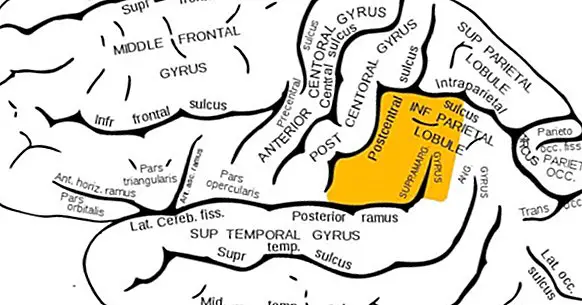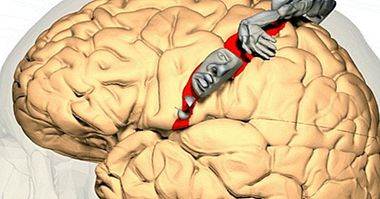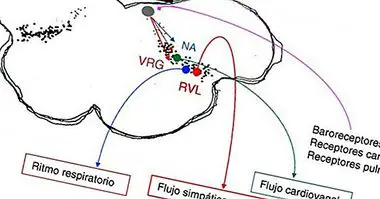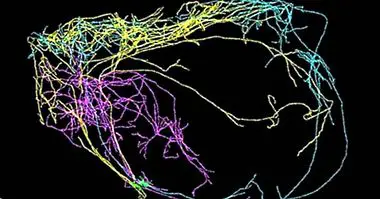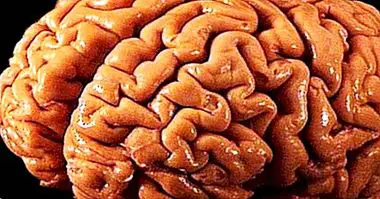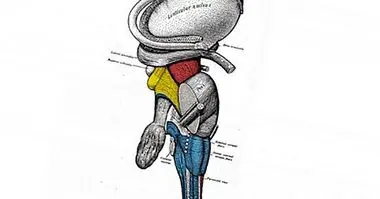Supramarginal rotation: functions and disorders associated with this brain region
The ability of the human being to read and write involves a large number of complex mental processes in which visual and auditory information is linked, and later motor in the case of writing. They involve complex processing and integration, which are carried out in different regions of the brain.
One of the most important is Brodman area 40, or supramarginal gyrus . Let's see how it is and what functions this part of the brain is responsible for.
- Related article: "Parts of the human brain (and functions)"
Supramarginal rotation: this is the part of the parietal lobe
The supramarginal turn is one of the twists or convolutions of the brain , that is, one of the visible folds of the cerebral cortex. It is located in the inferior parietal lobe, just above the Sylvian fissure and in close connection with the angular rotation and the Wernicke area. This gyrus is present at the bilateral level (that is, there is one in each cerebral hemisphere) and it has a great importance when it comes to allowing some complex processes to take place.
The parietal lobe is linked to a large number of basic functions in our day to day, such as language both orally and in writing or auditory perception and participates in aspects such as orientation and memory . The functions performed by the parietal lobe cortex are mainly linked to sensory perception and the processing and integration of information obtained by the senses.
The latter is one of the functions of the turn that concerns us. The angular gyrus is considered an association area , in which information from other regions of the brain is integrated.
- Maybe you're interested: "Neocortex (brain): structure and functions"
Functions of the supramarginal gyrus
The supramarginal gyrus is a brain area of great importance, which although it is essentially known for its role in language has various functions.
1. Literacy
One of the best-known functions of the supramarginal rotation is to allow, along with angular rotation, literacy. To be able to read and write we need to be able to perform the integration of visual and sound material in such a way that we can associate phonemes and graphemes, that is, the sounds and letters that represent them. They are both turns, the angular and the supramarginal, which also allow to associate visual representation and meaning.
This function is what makes the supramarginal rotation next to the areas of Broca and Wernicke and the angular rotation one of the main brain structures of language .
2. Work memory
It has been shown that aside from its role in language, the supramarginal rotation has connections with the dorsolateral prefrontal cortex that make it a relevant area for updating working memory.
3. Learning
It has also been observed that the supramarginal rotation participates in the acquisition of abilities, especially those that suppose movement. Although it is not confirmed, it is suspected that it is capable of record information regarding the position of the extremities based on the memory of previous events.
4. Touch perception
The supramarginal turn has been linked not only to language and cognitive aspects but also to the perception of tactile stimuli, specifically to their recognition.
Disorders and situations in which it is altered
The alteration or injury of this brain region can have different repercussions of varying severity, with alterations in the supramarginal gyrus being visible in patients with different disorders.
1. Aphasia
It is common to find affectations or alterations in this area in patients with aphasia. It is understood as such disorder in which understanding and / or expression of language is made difficult or impossible , caused by a brain injury.
The type of aphasia in which it is most common for damage to the supramarginal gyrus is the conduction, in which the repetition of words is damaged despite the fact that the understanding and expression of language remain unchanged.
- Related article: "Aphasias: the main language disorders"
2. Alexia
Because the supramarginal gyrus and is one of the main areas along with the angular integration between visual and auditory material, its injury or dysfunction and are linked to the alexia, which pose the existence of severe difficulties when it comes to power interpret or read a text.
In this way, a lesion in the supramarginal gyrus is going to be presumed alteration in the ability to read unable to correctly associate visual representation with its meaning.
- Maybe you're interested: "Alexia and agraphia: the alterations of written language due to brain injury"
3. Body neglect
As we have said, the supramarginal turn is not only involved in language but also performs other functions. Likewise, alterations in the supramarginal gyrus can also cause the presence of spatial neglect at the level of the body itself. There may also be some problems when working memory is working properly.
4. Schizophrenia
Apart from that, there are also alterations of the supramarginal gyrus in some mental disorders. For example, it is observed that a relationship between this area and auditory hallucinations in schizophrenia , there is a correlation between the size of the supramarginal gyrus and the severity of these.
- You may be interested: "The 6 types of schizophrenia and associated characteristics"
Bibliographic references:
- Clark, D.L .; Boutros, N.N. and Méndez, M.F. (2012). The brain and behavior: neuroanatomy for psychologists. 2nd edition. The Modern Manual. Mexico.

